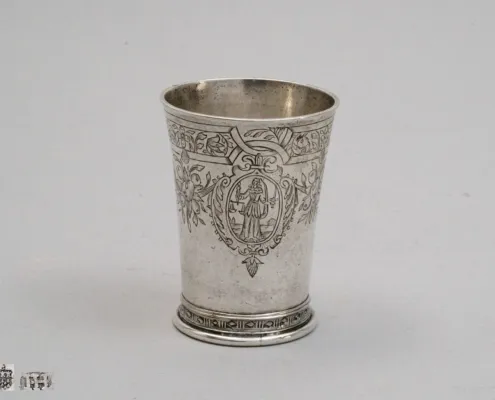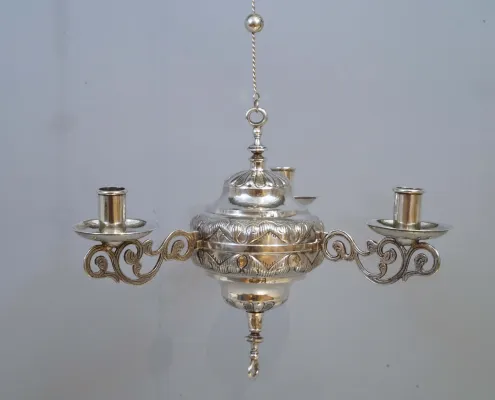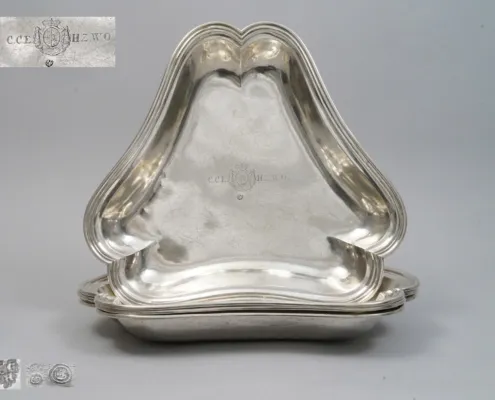Collecting Antique Silver
THE USES OF SILVER
Silver, next to gold, had always several uses due to its inherent value as a noble metal. The material was used to adorn one’s body through jewelry. Furthermore, it was used in the production of religious pieces that would glorify God in a symbolical way. Money was produced out of it. Exceptional vessels and decorative silver objects were to be found in imperial, royal, princely and bourgeois diner tables. Silver was also used as a medium of art, producing small sculptures, using them for book covers, making furniture and artistically decorating clothes or other elaborated objects of tableware.
In many cases, functional silver objects like for instance beakers, tankards, ewers and basins were created in an artistic and unique way that they were considered ever since their creation as art objects, objects to be collected and admired. Very often the ordering customer turned to famous silversmiths for such creations and the produced silver objects had different functions: commemorating, celebrating, dedicating or representing.
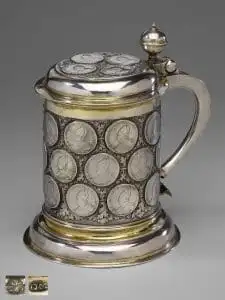
INTERESTING NEW AQUISITIONS
COLLECTING SILVER
During the centuries thus, many famous collectors made a reputation for their collection of silver, silver-gilt as well as gold objects. Kings like Louis XIV, empresses like Catherine the Great, war heroes like Duke Wellington and bankers like the Rothschilds are only a few of numerous famous collectors of exceptional, silver objects. These are only some of the illustrious collectors who belong to the history of modern times.
Next to the fact that silver is a noble material, silver objects have been always appreciated due to the high quality of craftsmanship they showed. Particularly since the early industrialization era, the manual and pure artistic side of silver gained an increased interest. Besides, new techniques and the development of new styles always kept silver objects and pieces of art as attracting objects for a well educated, aristocratic and wealthy public.
The turn of interest towards earlier artistic and historical periods, such the Renaissance, on the one side. And the boom of international exhibitions – organized around Europe and the world since 1851 (first in London) – on the other side, compose a zeitgeist appropriate for the development of silver collections in the two previous centuries. Particularly the last public events signal the development of design – and silver objects were always loved for their unique design.
SIGNIFICANT COLLECTORS OF SILVER
In this context of the nineteenth and the early twentieth century, important collectors around Europe were famous for their impressive silver collections, which were often presented in a historicizing environment. These collectors were also a reference in the art world and formed the taste for the one or the other objects.
One of the influential and world-wide known collectors based in Munich was the German mathematician with Jewish descent, Alfred Pringsheim (1850-1941) – father-in-law of the writer Thomas Mann (1875-1955). Alfred Pringsheim was not a simple collector, rather an art lover, who carefully bought not only silver objects, but also majolica, paintings and other art works. His silver collection – gathering a bit more than 100 pieces – was very tastefully presented and showed love for rare European pieces and preference for the Renaissance period.
The wonderful pieces of the silver collection of Alfred Pringsheim have all met an adventurous destiny during the Nazi-Socialist Era and the Second World War. Having been confiscated by the Gestapo, acquired by the Bayerisches Nationalmuseum (National Bavarian Museum) and finally returned to the rightful heirs of Pringsheim after Second World War, they are actually spread in collections and museums around the world. Helga Matzke during its existence possessed several silver objects from the collection of Pringsheim, which ended then in private and public collections. In summer 2016, an important German museum could acquire from us such a silver beaker, formerly in the Pringsheim collection.
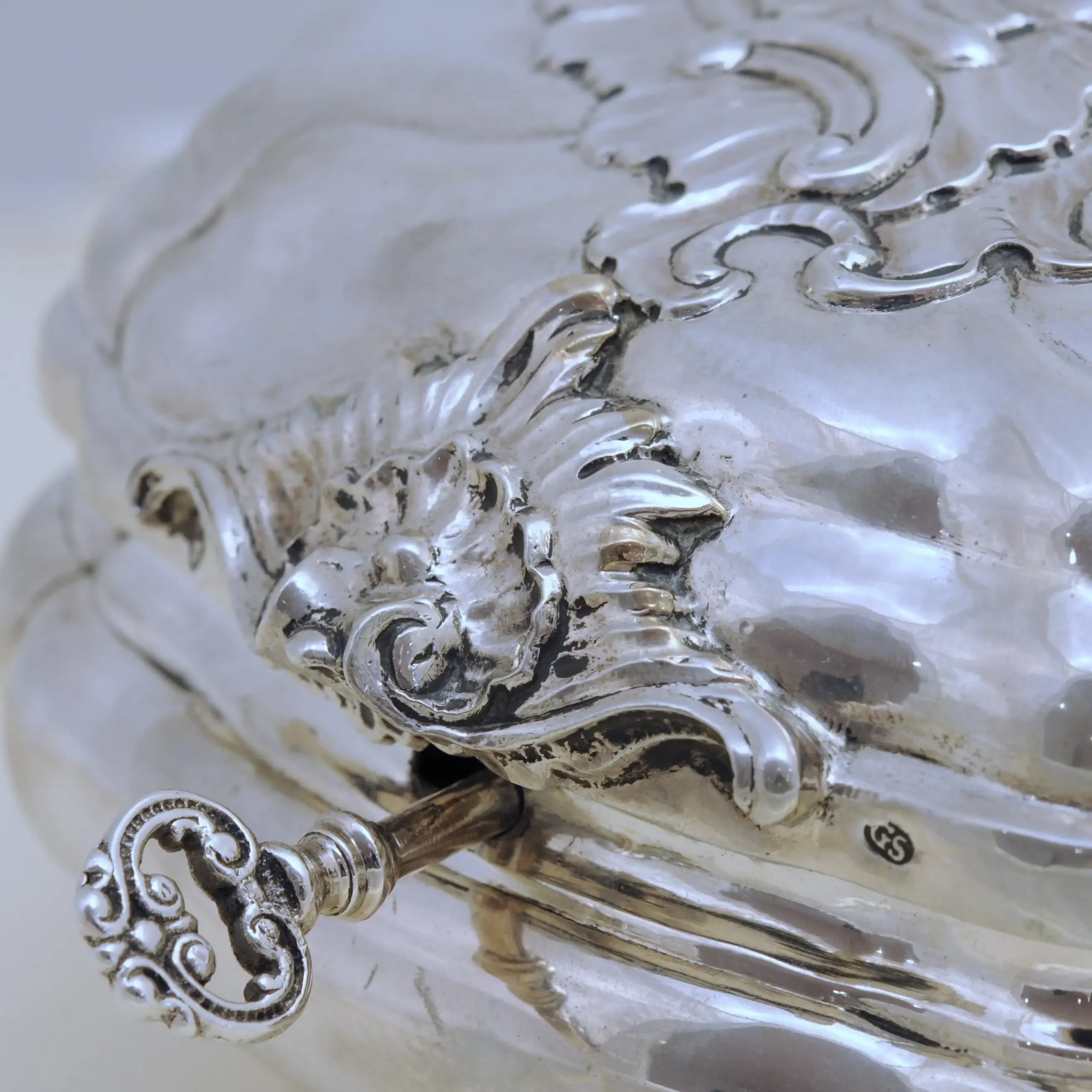
SILVER IN CONTEMPORARY COLLECTIONS
Collectors like Pringsheim and other silver art lovers of his time show us actually that the value of silver and objects made of it was appreciated continuously since Antiquity. The difference in every period lays in the way people presented their collections: behind absolutely closed doors; shown only to a few; closed in cabinets or silver vaults; shown in public; presented in a carefully designed environment, etc.
What Alfred Pringsheim teaches us, contemporary silver aficionados, is that living with the objects, always seeing them in a custom adapted environment brings us closer to appreciating every single object we have and deepen in their biography. Our era favors cross-collections, where the old co-exists harmonically with the new, and this is the exciting “new life” in the biography of silver rarities. These silver rarities stay always unique and valuable.
On this webpage, you will find selected pieces as well as the individual story behind them, ready to be integrated in new, contemporary and exceptional collections.
Selected Bibliography
- Busch, Jason T. & Futter, Catherine L. (Hrsg.), Inventing the Modern World: Decorative Arts at the World’s Fairs, 1851-1939, Kat. Ausst. Carnegie Museum of Art/The Nelson-Atkins Museum of Art, Carnegie Museum of Art &Skirra Rizzoli: New York, 2012.
- Brucculeri, Antonio, ‘Le néo-Renaissance en France et la Haute Banque: Habiter et collectionner entre les années 1830 et 1880’ in MDCCC 1800, vol. 5, 2016, p. 45-70.
- Prevost-Marcilhacy, Pauline (eds.), Les Rothschild, une dynastie de mécènes en France, 3 vols., Paris: Somogy/BNF/musée du Louvre, 2016.
- Seelig, Lorenz, Die Silbersammlung Alfred Pringsheim, Riggisberg: Abegg-Stiftung, 2013.
- Seelig, Lorenz, ‘The Art Collection of Alfred Pringsheim (1850–1941)’ in Journal of the History of Collections (online), 2016.



